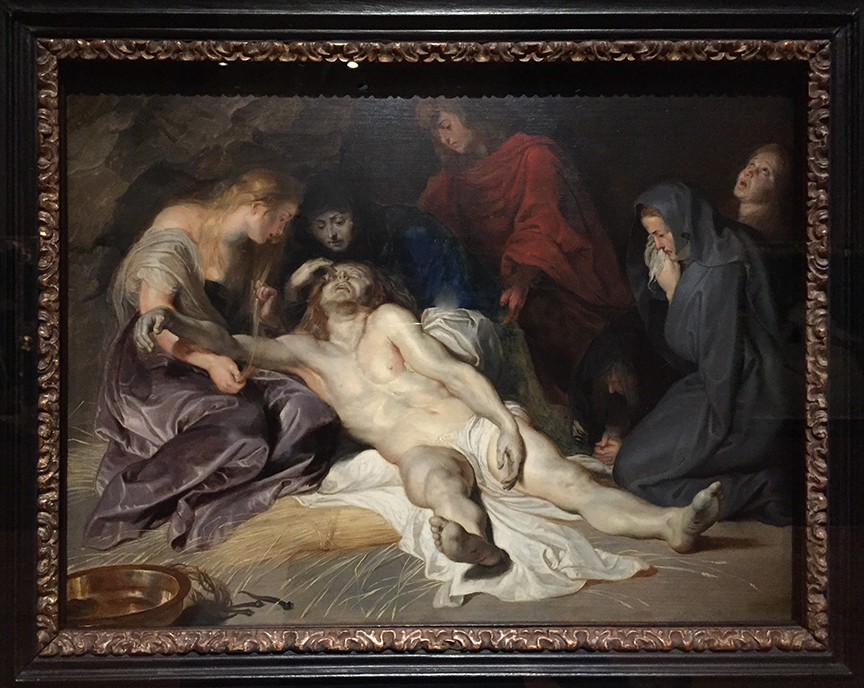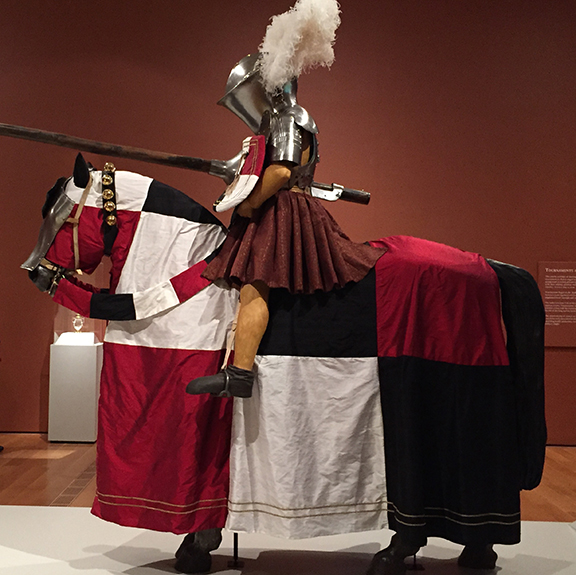Seeing a collected body of work by Gustave Courbet is like reading a juicy novel full of adventure, passion, scandal, and even crime. With this artist you witness his story clearly displayed on his canvases and learn about a man who not only created some monumental works of art, but led a life totally determined by his own convictions and ideas.
Gustave Courbet, a Frenchman born in 1819 -1877, was from a small town in the country called Ornans. Courbet grew up in a middle class environment in provincial France and left for Paris when he was twenty. In the big city, he lived amongst the Bohemian section of writers and painters. This was a time of great tension between the established artists and those of lesser backgrounds and money. He was powerfully influenced by Delacroix and Gericault and political writers such as Pierre-Joseph Proudhon and good friend Jules Champfleury. The richness of this time in art, literature and politics is vast and encouraged me to find out more about the strifes and debates during this highly creative period in France and Europe.
Courbet is mentioned in the exhibition byline as one who opened the door to Modern art, I think only because he did want to break with the Salon Rules and oppressed culture of his times. Otherwise, he favored the term- Realists and strongly argued his case and meaning in the art world. He was not afraid of consequences and even paid for his political outbursts by being ultimately sent to jail and later a self imposed exile.
Sometimes, Courbet used his art to exemplify ideas of his world and he certainly used his pictorial rhetoric to denounce his government's superiority over the arts. He refused to accept the French Legion of Honor for an appearance of accommodating the monarch Napoleon III's order to dominate the arts.
Courbet's goal was to establish an arts society that was run by artists, involving everything from the appointees of museums, to art teachers in schools. Eventually with the destruction of the Vendome Column, Courbet was fined and sent to prison. The action of the revolting Commune was not condoned by Courbet and he fought for his integrity, name, and actions to save many works of art with the destruction of the Tuileres Palace. He did not ultimately have to pay with his life in France's severe prison and thus got off lightly 'so they say'.
This is the stuff of Courbet's life- one of enlightenment and personal accomplishments and yet burdened with severe political reprimands for his passionate views. Such focused actions from an artist who studied, showed and taught art reveal an honesty to his own art which deserves to be admired.
When you look at the show's poster image, a self portrait titled "The Desperate Man", you see quite clearly the strained look of a man with his staring eyes and pained look very much the focal point. These wide open eyes peering squarely out into the public, are uncommonly strained and honest as he was pulling his hair and grabbing his head. In the other self portraits, Courbet never really showed his eyes, they were usually in shadow and not very finished.
This multidimensional artist experienced equal passion in expressing the beauty of the landscape and seascapes of his native Ornans. This was still a time where great artists learned to paint all and any subjects. It revealed a freedom and passage to become a more accomplished painter fully utilizing the medium to express anything he wanted to concentrate on. Artists seem to demand freedom of expression and some at any costs.
After passing through the first room of self portraits and a variety of pained and even sensual expressions, the viewer is really brought to the journey with an interest and at least curiosity for what's next. A famous subject for Courbet was his love for the female figure and often quite shocking and erotic compositions. I learned that even with commissions, Courbet demanded complete freedom to express, and no preliminary sketch would be allowed for the client of this artist.
One painting worth mentioning that was absent because of its large size was "The Artist's Studio". Drawn on the museum wall was the actual dimensions of this controversial oil and smaller references to different people that were in the large painting. Smaller exhibiting oils were present that referred to some important figures in his life. Delacroix declared this painting a masterpiece and others rejected it completely. It was definitely an important statement by Courbet and yet he himself could not possibly explain it all. But he also knew that it was in the viewing by the individual that meaning would reveal itself without any words necessary by the creator. "The Studio of the Painter," 1855, can be seen at the Musee d'Orsay and would be a great crescendo to the drama that is revealed and built up in the paintings we see in the show at hand.
Eventually, I reached the large fish paintings which were metaphorically representing his time in prison. He did these oils in prison and from memory, clearly, representing his own capture and imprisonment. These are not pretty images, but powerful in size and handling of thick paint. Courbet was not to be silenced by anyone, anywhere.
In experiencing a large show of Gustave Courbet, I would compare his energy somewhat to Van Gogh. Not so much as to color and application, but to the pained passion of the masterful artist who desperately needed to connect to his audience and experience a multitude of subjects. There is almost more than the viewer can handle at one time and sometimes you may need to be selective. One of the benefits of such a compilation of work, the viewer really gets a chance to understand the life of an artist and relate to his work's direction and influence from the culture, and to his place in the world. In such a rare show, art history becomes electrified and intrigues the participant to want to know more.
Starting out a rather simple artist from a small region, young Gustave aimed to create art that would agree with main stream tradition. As he worked, traveled, copied the masters, and became a progressive demonstrator of new ideas, Courbet evolved his mastery into complex themes and reflective imagery. Courbet pushed for the elimination of the salon exclusion of artists and juries in a time where the poor and middle class were also controlled by the upper class domination.
Gustave Courbet claimed that Art represents man in his physical status and in his time while also being the result of the artist's individual expression and imagination. He felt these ideas were inseparable. Courbet's fundamental statement about Realism in his Realist Manifesto is an interesting topic for current discussions of art. The public review of Realism via Courbet reestablishes some timeless principles when abstraction, subjective ramblings of descriptions of visual art, and shock value have become the dominating subjects of today's promoted art.






